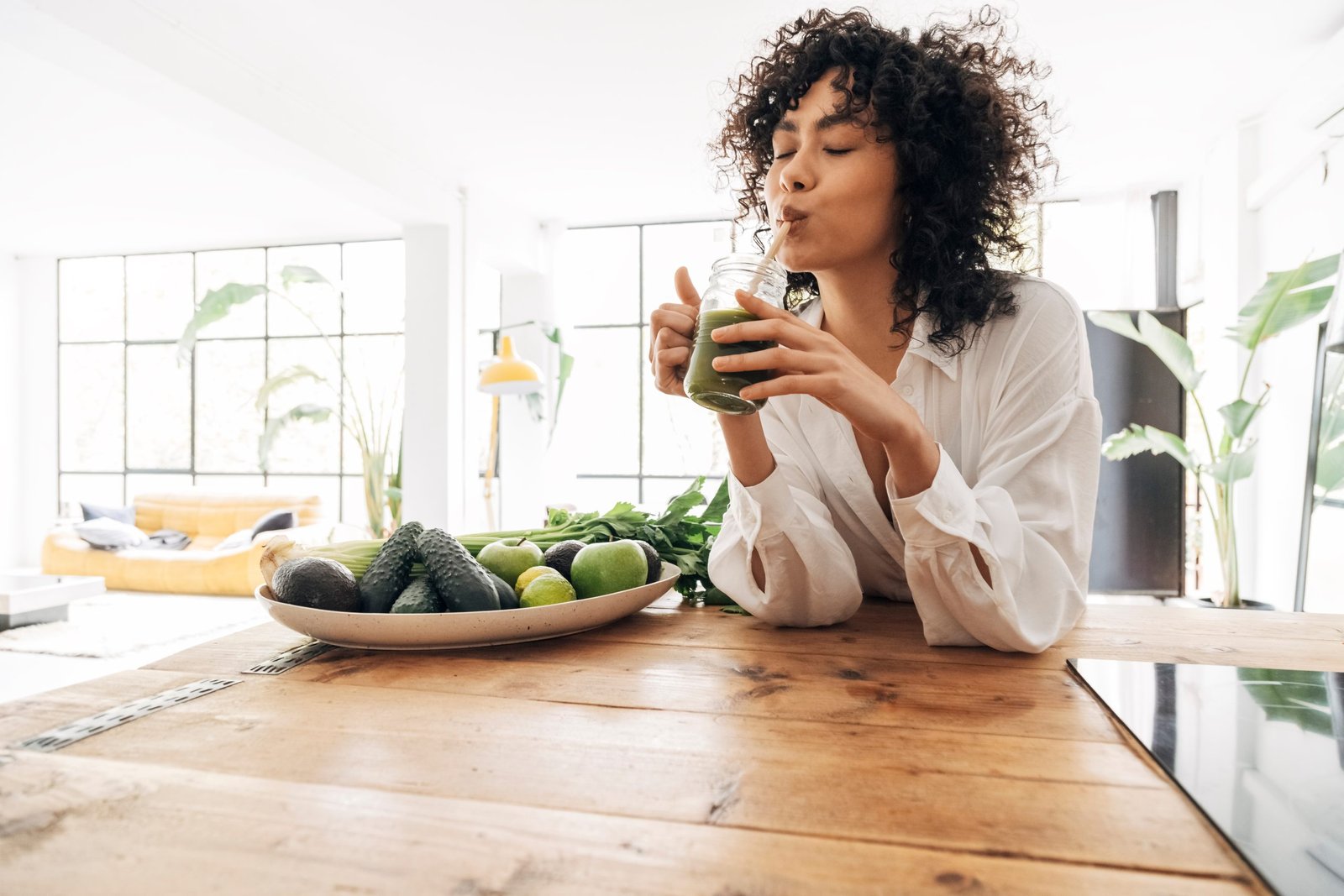If you’re struggling with acne and wondering what natural therapies could help clear it, your diet is a great place to start. Up until recent years in the Western world, diet was often dismissed as having any connection to the development of acne. But, we now have a growing body of research to show that diet can help clear acne, and which foods may be best for acne-prone skin.
Can your diet cause acne?
We don’t know if diet can cause acne, but I’d say the wrong foods can increase the risk of developing acne. In Westernised societies, up to 95% of the population will experience some form of acne in their lifetime. Whereas, when researchers looked into the diet of people from non-westernised populations the rate of acne was almost non-existent. This started to raise questions as to whether the increase in acne was due to genetic factors, or if our diet, environment and lifestyles in the Western world were contributing to it.
A Westernised diet tends to be one that is high in refined carbohydrates and sugars, processed foods and low in fruits, vegetables and whole grains.
How your diet can help clear acne
Before we get into the specifics of which foods are best for acne, or the best diet for acne-prone skin. Let’s talk about how our diet might influence our skin health in the first place.
Where does your skin get its nutrients from?
The skin is the body’s largest organ. And with all the functions and responsibilities it has, it has a pretty high demand for nutrients. For the skin to create healthy skin cells and a healthy skin barrier, it needs a few different nutrients. These include vitamins A, C, D, E and minerals such as zinc, selenium and copper. As well, the skin needs a good dose of protein and essential fatty acids to keep it properly hydrated. Now, the skin is like an onion – it has loads of layers. But we can split them into three main parts.
- The Epidermis (the outer part of the skin that you can touch)
- The Dermis (the middle layer, like a mattress for the skin)
- The Hypodermis (fatty layer at the base of the skin)
Skin cells are made at the base of the epidermis. But, the epidermis doesn’t have its own blood supply, so it relies on the dermis (middle layer) to supply it with all the nutrients it needs to create healthy skin cells. And if you’re wondering how nutrients end up in the blood supply, it’s not from skincare. It’s from the food that you eat.
Your skin gets the nutrients it needs from the food that you eat. When we eat food, our digestive system breaks down these nutrients so that they can be absorbed into the bloodstream. Once they’re in the bloodstream, they travel to the skin to create healthy skin cells. As you can see, to give our skin the nutrients it needs to be healthy, we need to make sure we’re eating them.
Blood glucose spikes and acne
One of the main reasons that a Western-style diet can trigger or worsen acne is due to its high amount of refined carbohydrates and sugars. When we eat starchy carbohydrates that are low in fibre such as white potato, white rice, white bread and white pasta, they get broken down into glucose (sugar) very quickly by the body. This causes a big spike in blood glucose levels (the level of sugar in the blood). If we continuously spike out blood glucose, it can cause an increase in hormones such as insulin and testosterone, which contribute to blocked pores, increased oil production in the skin and inflammation. This then increases the risk, or severity of people’s acne.
Does this mean you can never eat white foods? No, but never eat starchy carbohydrates alone. You want to make sure that you’re eating them with a source of protein, healthy fats or fibre as this helps to slow the spike.
Gut health and acne
Another factor of the Western diet is that the low intake of fibre, fruits and vegetables seems to negatively impact the gut microbiome. There is so much research available now to show the link between gut health and acne, and how the gut microbiome can influence the skin. As well, you’ll be getting a whole load of antioxidants and nutrients from plant-based foods, which are essential for creating healthy skin cells.
Foods to include if you have acne
The best diet for acne is one that is high in nutrients, helps to keep your blood glucose stable and supports your gut health. We can follow this diet in a number of ways.
Nutrient-dense foods
Nutrient-dense foods are foods that are naturally high in nutrients – not superfood powders. You’ll find a high amount of skin-supporting nutrients in the following foods:
- High quality, grass-fed meats
- Oily fish (salmon, mackerel, anchovies)
- Eggs
- Vegetables
- Fruits
- Nuts and seeds (Brazil nuts, walnuts, flaxseeds, pumpkin seeds)
Balancing Blood glucose
My best advice when it comes to balancing your blood glucose is to focus on what you can add. Protein, healthy fats and fibre (fruits & vegetables), all help to slow the absorption of glucose into the bloodstream, preventing spikes. Before you try and go cold turkey on sugar, just add things into your diet. Here are some examples:
Instead of: White bread toast + butter, with tea + sugar
Try this: White bread toast + butter + avocado, with tea + sugar
The addition of avocado provides healthy fats and fibre to help slow the glucose spike from the toast and the sugar. As well, while you’re adding healthy proteins, fats and fibre to meals, you’ll also be increasing your nutrient content. A double skin bonus!
Supporting your gut health
The basis for supporting gut health is making sure you’ve got a lot of fibre in your diet. Fibre is the fertiliser that allows beneficial bacteria in our guts to grow and flourish. Quite literally, think of your gut as a garden. If we feed the gut with fertiliser, water it and generally just look after it, we will get the reward of lots of blooming beneficial bacteria. However, if we neglect it and forget to feed it, we’ll see an overgrowth of weeds (bad bacteria), and the beautiful flowers won’t flourish!
You will get the most fibre from whole grains such as quinoa, brown rice, rye, spelt, barley, oats and bulgur wheat. As well as increasing your overall vegetable intake. There are some vegetables which are high in prebiotic fibres that help to feed the gut. These include asparagus, garlic, onions, leeks and Jerusalem artichokes.
Another thing to try can be probiotic foods. These are foods that have fermented, and in the process encourage the growth of beneficial bacteria. When shopping for probiotic foods, you want to look out for ‘raw’ and ‘unpasteurised’ to make sure you get a good dose of probiotics. Probiotic foods include things like kombucha, kefir, kimchi, sauerkraut and miso.
Already eating the best diet for acne, but still breaking out?
If you feel like you’re already eating the best diet to clear acne, but not getting results, it’s time to dig a little deeper. While following a healthy, nutrient-dense diet is essential, it can’t always fix underlying nutrient deficiencies and imbalances alone. This is where blood tests and targeted supplements can be useful. If you want to learn more about consultations to clear your acne with an acne nutrition specialist, you’ll find more information here.





0 Comments